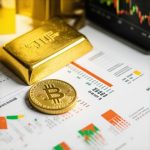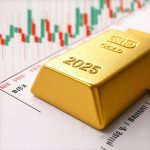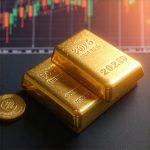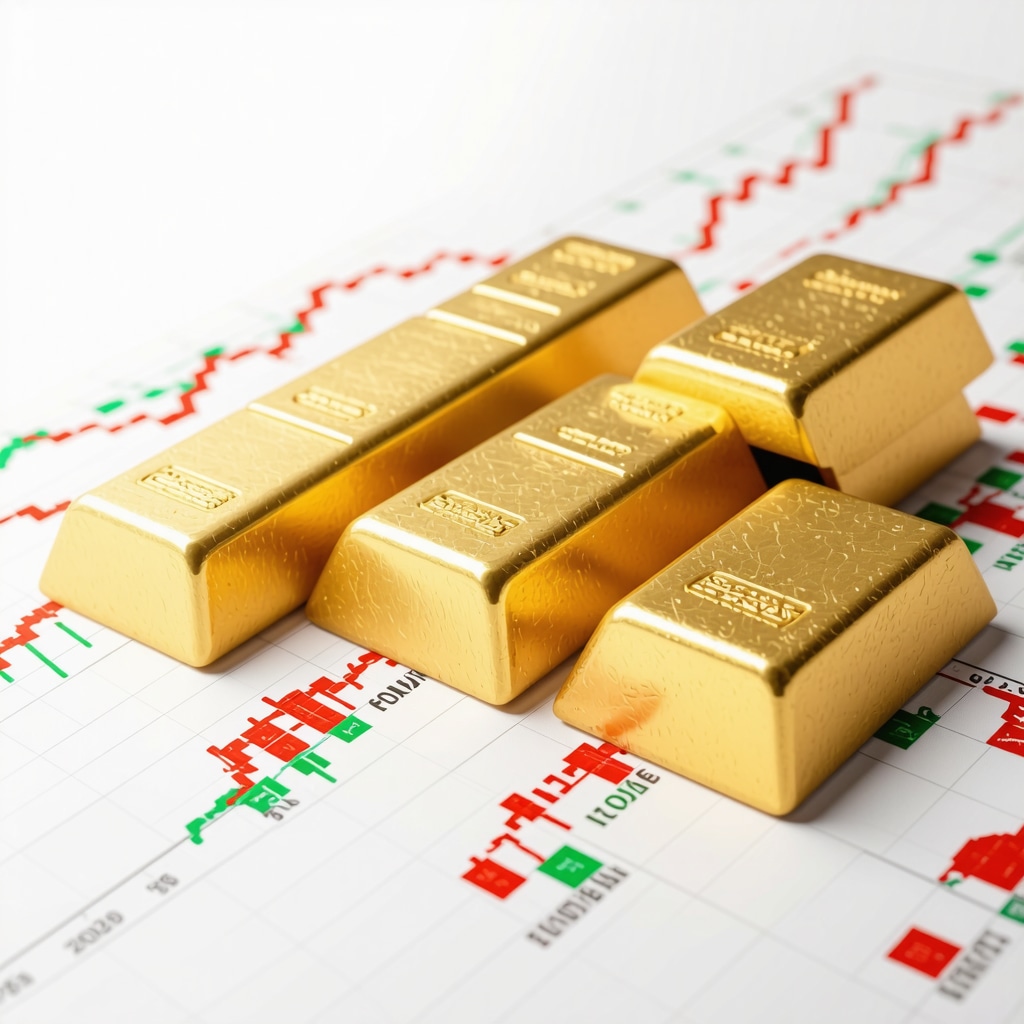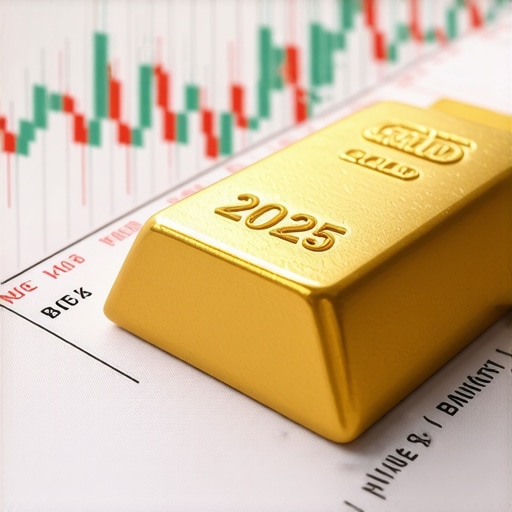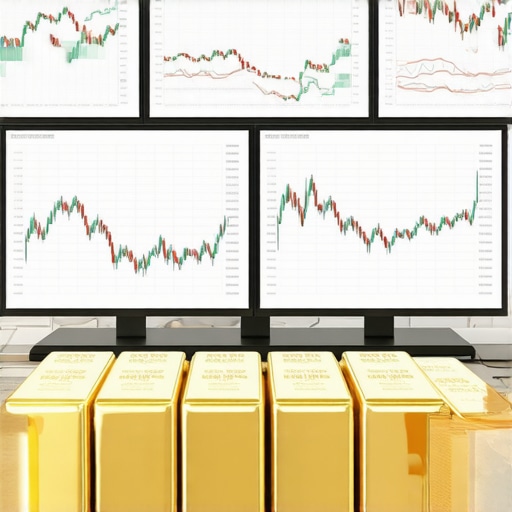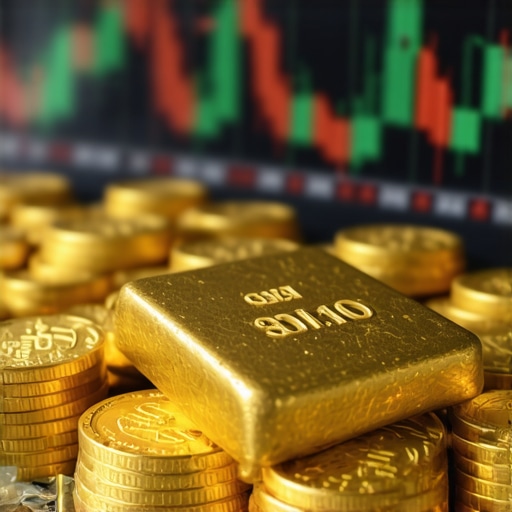Unraveling the Dynamics of Gold Price Trajectories in 2025
As financial markets evolve amid geopolitical shifts, inflationary pressures, and technological innovations, understanding the future of gold prices becomes paramount for investors, policymakers, and industry stakeholders. Gold, long revered as a safe haven asset, continues to adapt to complex economic signals, prompting a nuanced analysis rooted in both macroeconomic principles and market-specific indicators.
Key Economic Drivers Shaping Gold Price Expectations in 2025
How Will Inflation and Monetary Policies Influence Gold Valuations?
Inflation remains a core driver of gold demand, especially as central banks navigate the delicate balance between interest rate policies and economic growth. A persistent inflationary environment, coupled with accommodative monetary policies, tends to bolster gold prices. Conversely, rate hikes aimed at curbing inflation might temporarily suppress gold’s allure. According to a recent IMF report, inflation expectations in 2025 will significantly influence gold’s market trajectory.
Technological and Supply-Side Influences on Gold Market Dynamics
The advancement of gold mining technology and the potential for increased supply from major producers could modulate price volatility. Additionally, innovations in gold-backed financial instruments, such as ETFs and futures, expand market accessibility and liquidity. Analyzing gold mining stocks and ETFs offers insights into supply-side trends that will shape the 2025 landscape.
Expert Perspectives on Gold Price Trends in 2025
Market analysts predict that geopolitical tensions, especially involving major economies, will sustain demand for gold as a geopolitical hedge. Additionally, the ongoing transition to digital currencies and the role of central banks’ gold reserves will influence price stability and growth. For a comprehensive outlook, consult industry reports such as the Gold Market Outlook 2025.
What Are the Most Advanced Strategies for Investing in Gold in 2025?
Investors seeking to capitalize on projected trends should consider diversifying through physical gold, ETFs, and mining stocks, employing technical analysis and market timing techniques. For strategic insights, explore gold trading strategies tailored for 2025 conditions.
To deepen your understanding of gold’s future prospects, explore our extensive guides on gold bar and coin investments and gold IRA planning. Engage with the community of financial experts to refine your investment approach and stay ahead of market shifts.
Innovative Approaches to Gold Investment in 2025
As the gold market continues to evolve amid geopolitical tensions and economic uncertainties, investors must adopt innovative strategies to capitalize on emerging opportunities. Traditional methods like holding physical gold or ETFs remain relevant, but integrating advanced techniques such as algorithmic trading and macroeconomic analysis can significantly enhance portfolio performance. For instance, leveraging effective gold trading techniques can help investors navigate volatile market conditions with precision.
Challenging Assumptions: Is Gold Still the Ultimate Safe Haven?
While gold has historically been considered a reliable safe haven, recent shifts in the financial landscape prompt a reevaluation of this assumption. Digital assets, such as cryptocurrencies, are increasingly competing for investor attention as alternative hedges. However, experts argue that gold’s tangible nature, liquidity, and longstanding global demand still position it as a robust hedge against inflation and economic downturns. According to a comprehensive industry report, diversifying across both traditional and modern assets may provide the optimal risk mitigation in 2025.
How Will Geopolitical Risks Shape Gold Investment Opportunities in 2025?
Geopolitical conflicts and international policy shifts remain critical factors influencing gold prices. Tensions involving major economies can elevate demand for gold as a safe haven, creating lucrative entry points for strategic investors. Monitoring supply-demand dynamics and central bank activities offers valuable insights into potential price movements. For those seeking to diversify, exploring top gold coins and bullion options can enhance wealth preservation efforts.
If you’re interested in refining your investment approach, consider engaging with experts through online forums or subscribing to industry reports, which can provide timely analysis and strategic guidance.
Innovative Financial Instruments Transforming Gold Investment Strategies in 2025
As the landscape of gold investment continues to evolve, innovative financial instruments are playing a pivotal role in shaping investor strategies. Beyond traditional holdings, sophisticated derivatives like gold options and structured products are gaining traction, offering tailored risk-return profiles suited for advanced investors. These instruments allow for hedging against volatility or leveraging market movements, but they also require a deep understanding of complex pricing models and market signals.
For example, the application of black-scholes modeling in pricing gold options provides traders with a quantitative edge, enabling them to optimize entry and exit points. Additionally, the emergence of blockchain-backed gold tokens introduces enhanced liquidity and transparency, bridging physical gold with digital assets. According to a recent report by The World Gold Council, these developments could significantly alter how wealth is preserved and grown through gold in the coming years.
Deep Dive: The Role of Central Bank Reserves and International Policies in 2025
Central banks remain key players in the gold market, with their reserves influencing both supply and demand dynamics. In 2025, shifts in reserve policies—whether through accumulation or divestment—are driven by geopolitical considerations and macroeconomic strategies. Notably, countries with fluctuating dollar reserves are increasingly exploring diversifying into gold to mitigate currency risks, as highlighted in a detailed IMF working paper.
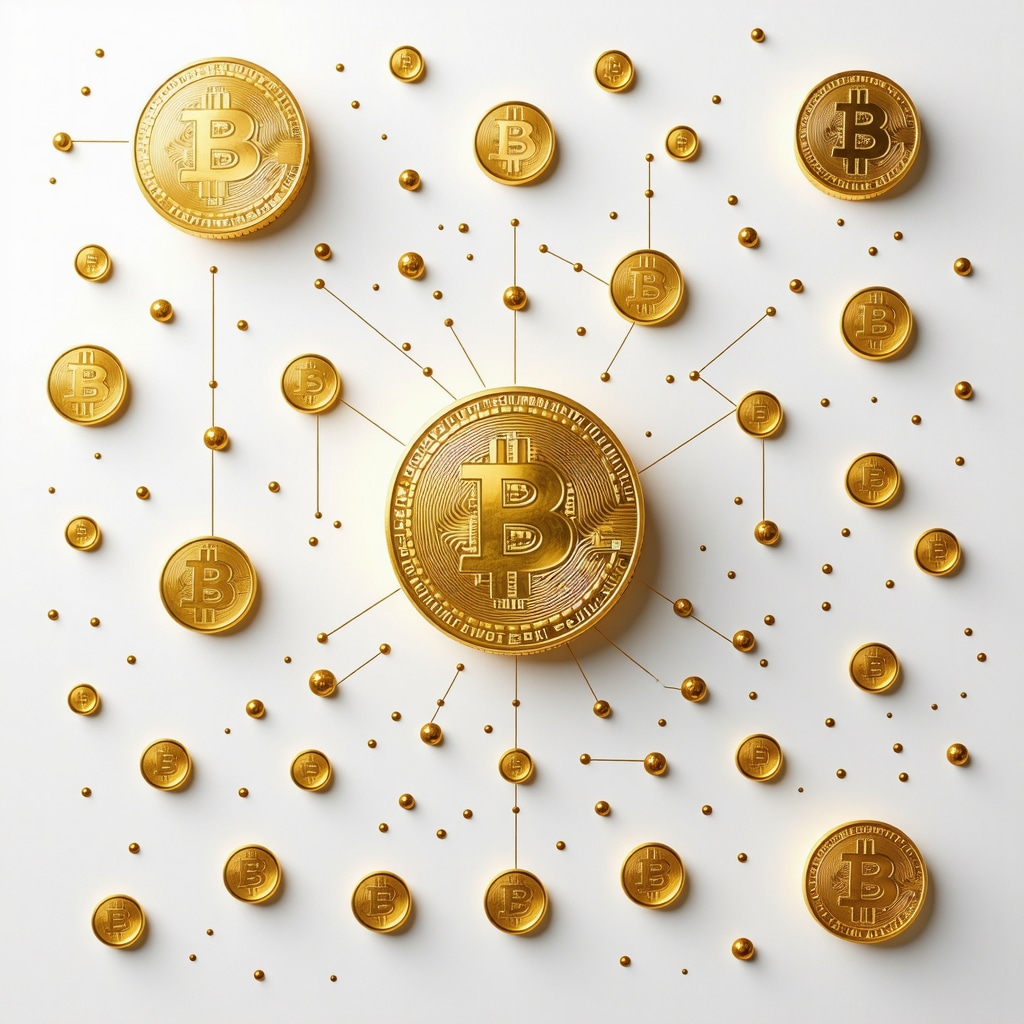
This evolving policy landscape underscores the importance of geopolitical risk assessment and macroeconomic analysis in making informed gold investment decisions. Investors who monitor central bank activities and policy shifts can anticipate potential market moves, positioning themselves to capitalize on opportunities created by geopolitical tensions or policy adjustments.
Nuanced Perspective: How Digital Assets Are Reshaping Traditional Gold Hedging
The rise of cryptocurrencies and digital assets introduces new dimensions to hedging strategies. While gold’s tangible nature and historical stability remain strong points, digital assets offer liquidity and ease of transfer that appeal to modern investors. For instance, the emergence of stablecoins backed by gold combines the stability of gold with the transactional efficiency of blockchain technology, making them an attractive diversification tool.
According to a comprehensive industry analysis by Buying Gold Now, integrating digital assets into a diversified portfolio can enhance risk mitigation, especially amid rising inflation and economic uncertainties. However, understanding the regulatory landscape surrounding these assets is critical for safeguarding investments and maintaining compliance.
What are the most effective risk management techniques for sophisticated gold investors in 2025?
Advanced investors employ a combination of technical analysis, macroeconomic forecasting, and derivative hedging to manage exposure. Techniques such as dynamic portfolio rebalancing and scenario analysis enable investors to adapt swiftly to market shifts. Engaging with professional advisory services or utilizing AI-driven predictive analytics can further refine these strategies, ensuring resilience during volatile periods.
To deepen your strategic approach, explore detailed case studies and expert commentary available through industry platforms such as Gold Investment Strategies 2025. Staying informed and adaptable remains crucial for maximizing returns and minimizing risks as the gold market enters a new era of technological and geopolitical complexity.
Strategic Implications of Geopolitical Shifts on Gold Market Dynamics in 2025
As geopolitical tensions escalate or de-escalate, the ripple effects on gold prices become increasingly intricate, demanding a nuanced understanding of international relations and their economic repercussions. Countries leveraging gold reserves as geopolitical leverage or reserve diversification tools introduce volatility that savvy investors must decode. For instance, recent policy shifts by emerging economies seeking to bolster their gold holdings signal strategic moves that could alter global supply-demand balances, as detailed in the IMF working paper.
How can investors leverage geopolitical intelligence to optimize gold investment timing in 2025?
Proactive analysis of international policy developments, combined with real-time monitoring of central bank activities, enables investors to anticipate market swings. Utilizing advanced geopolitical risk assessment tools and scenario planning can create a strategic edge in capturing entry and exit points within volatile periods. For an in-depth understanding, consult resources such as the supply-demand dynamics report.
Innovations in Gold-Linked Digital Financial Instruments and Their Market Impact
The emergence of blockchain-enabled gold tokens and decentralized finance (DeFi) applications heralds a new era of liquidity, transparency, and accessibility. These innovative instruments allow investors to hedge, speculate, and diversify with unprecedented flexibility while maintaining exposure to physical gold’s intrinsic value. According to The World Gold Council, such developments could substantially reshape portfolio strategies, especially in a landscape characterized by economic uncertainty and technological disruption.
What are the best practices for integrating gold tokens and DeFi assets into a traditional portfolio?
To effectively incorporate these digital instruments, investors must conduct rigorous due diligence on platform security, regulatory compliance, and liquidity profiles. Diversification across physical gold, ETFs, and digital assets, complemented by risk management frameworks such as value-at-risk (VaR) models, enhances resilience. Exploring case studies through industry platforms can provide pragmatic insights into successful integration strategies.
Emergence of Quantitative Models and AI in Gold Price Prediction
Leveraging artificial intelligence and machine learning techniques, such as neural networks and reinforcement learning, allows for sophisticated modeling of gold price movements based on multifaceted macroeconomic and market data. These models can identify subtle patterns and generate probabilistic forecasts that surpass traditional technical analysis. Researchers from leading financial institutions recommend ongoing model validation and stress testing to mitigate overfitting risks, as discussed in recent publications by IMF studies.
How can quantitative analysts enhance gold trading algorithms for 2025?
Developing adaptive algorithms that incorporate macroeconomic indicators, sentiment analysis, and alternative data sources can improve predictive accuracy. Incorporating explainability techniques ensures transparency, fostering trust and facilitating regulatory compliance. Engaging with continuous learning systems enables real-time strategy adjustment, positioning traders ahead of market shifts.
For practitioners aiming to refine their analytical toolkit, accessing specialized training in financial machine learning and collaborating with data scientists can unlock new levels of strategic sophistication.
Expert Insights & Advanced Considerations
1. Gold as a Dynamic Safe Haven
In 2025, gold continues to serve as a resilient safe haven, but its role is evolving with geopolitical shifts and technological advancements. Experts emphasize the importance of integrating digital assets like gold-backed tokens into traditional portfolios to enhance diversification and resilience.
2. The Impact of Central Bank Policies
Central bank reserve activities remain pivotal. Monitoring reserve accumulation and divestment provides strategic entry and exit points. Advanced investors leverage macroeconomic indicators and geopolitical intelligence to anticipate market movements driven by policy changes.
3. Technological Innovation in Gold Investment
AI-driven predictive models and blockchain-enabled gold tokens are transforming market access and liquidity. Sophisticated traders utilize these tools for precise timing and risk management, aligning with emerging market dynamics for maximum profitability.
4. Geopolitical Risks and Market Timing
International tensions influence gold prices significantly. Expert investors employ scenario analysis and real-time geopolitical risk assessment to optimize investment timing, capitalizing on volatility created by global policy shifts.
5. Diversification Through Advanced Instruments
Derivative instruments such as gold options and structured products are increasingly vital. Mastery of complex pricing models and risk frameworks allows for tailored exposure, hedging, and leverage in uncertain markets.
Curated Expert Resources
- The World Gold Council: A leading authority providing market research, innovative financial instruments, and policy analysis that shape strategic investment decisions.
- IMF Working Papers: In-depth macroeconomic analyses focusing on inflation, reserve policies, and global economic trends impacting gold markets.
- Buy Gold Now Industry Reports: Comprehensive guides on gold demand, industry shifts, and technological innovations, essential for expert-level market navigation.
Final Expert Perspective
Understanding the nuanced interplay of geopolitical risks, technological progress, and macroeconomic policies is crucial for mastering 2025 gold price dynamics. As an expert, staying engaged with authoritative resources and leveraging advanced analytical tools will empower you to make informed, strategic decisions. For those committed to excellence in gold investment, continuous learning and community engagement are indispensable—explore our detailed guides and expert forums to refine your approach and lead in this evolving market landscape.
